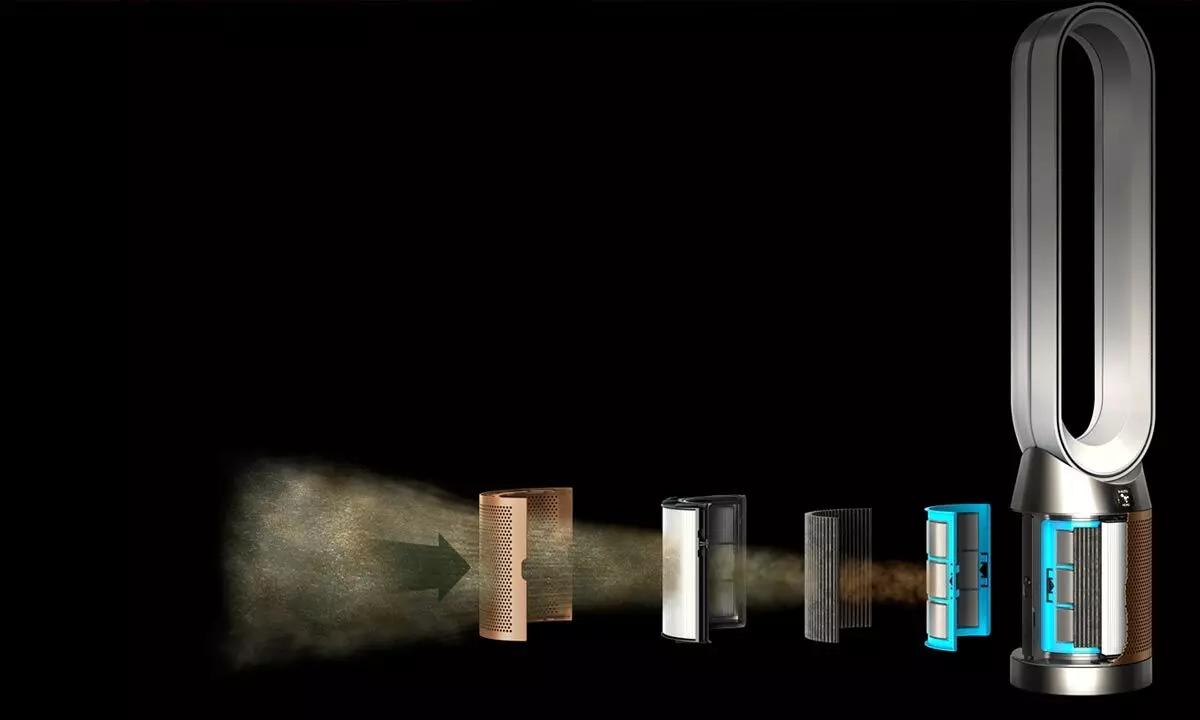Air Purifiers for Asthma: Effectiveness and how to choose the right one

Air Purifiers for Asthma: Effectiveness and how to choose the right one
This World Asthma Day, which is organised by Global Initiative for Asthma (GINA), Ken Armstrong, Air Purification Scientist at Dyson suggests how to choose the right air-purifier to suit your needs.
Every day, our bodies take in more air than any other substance. With the air quality worsening more than ever, we are breathing various pollutants, increasing the prevalence of a number of health issues including asthma.
According to the 'Global Asthma Report 2018', out of 1.31 billion people, 6 percent of children, and 2 percent of adults suffer from asthma in India.
If you experience breathing issues or health conditions related to polluted air, then you may be looking for solutions for cleaner air. While the first obvious thought could be to stay at home; as homes become increasingly well sealed; it may seem like we're shutting pollution out. On the contrary, we're shutting it in. Whether we're sleeping, working, cooking, or exercising, we are potentially breathing dirty air. We can do little to control the quality of the air we breathe outside. But there are ways we can protect our health and wellbeing in our homes. One such way is to invest in an air purifier.
Dr Neeraj Awasthy, Cardiologist, Pediatric Cardiologist and General Physician - Max Super Speciality Hospital, Saket says, "Both outside and indoor air quality can be catastrophic for our health. Our homes are a potpourri of myriad substances that may not be visible to naked eyes but contribute to an unhealthy home environment. There is a direct relation between the exposure to such bad air quality and flaring up of asthma and other breathing issues. Therefore, it is integral to identify such respiratory and asthma triggers to steer clear of these allergens. These days air purifiers are acting as a strong weapon to ensure respiratory wellbeing. They are capable of sensing and capturing harmful pollutants and eventually controlling asthma symptoms."
The decision to purchase an air purifier is a positive step towards protecting the respiratory health of both you and your family. This World Asthma Day, which is organised by Global Initiative for Asthma (GINA), Ken Armstrong, Air Purification Scientist at Dyson suggests how to choose the right air-purifier to suit your needs.
Purifiers come in various shapes and sizes, remove different kinds of air pollutants in your homes, and offer a wide array of features and specifications. Here are five important things to note before you buy an air purifier.
Type of filter used:
There are different types of filtration and cleaning systems present in purifiers.
Ultraviolet light, for example, uses electromagnetic radiation to destroy bacteria, viruses and mould but does not remove dust, allergens or particles in the air. Activated carbon filters react chemically with pollutants to clear smoke, odours and gases from the air, but alone do not filter out harmful fine particles. Ionisers work by sending out a stream of charged ions to attract dust and allergens. While fairly popular, it is important to know ionisers can produce ground-level ozone. This raises indoor ozone, which can irritate your lungs.
HEPA H13 standard filters are highly effective at capturing 99.95 per cent of particles as small as 0.1 microns such as allergens, bacteria, H1N1 virus, pollen and mould spores. HEPA filters alone, however, will not remove formaldehyde.
There are certain filters that continuously destroy formaldehyde at a molecular level. They have a unique coating, with the same structure as the Cryptomelane mineral. Its billons of atom-sized tunnels are the optimal size to destroy formaldehyde, breaking it down into tiny amounts of water and CO2. It then regenerates from oxygen in the air to keep destroying it continuously without ever requiring replacement.
Ability to remove fine and ultra-fine particles:
While seemingly fundamental, it is important to be aware of the invisible enemies that we are dealing with in our homes. In India, PM2.5 is the most commonly mentioned particle size – which is prevalent in India, almost throughout the year. Particles, unfortunately, do not stop at 2.5 microns. PM0.1 particles, also known as ultra-fine particles, tend to penetrate the fine sacs in our lungs (also known as alveoli) and may even enter our bloodstream easily.
Area of coverage and ability to circulate air:
To gauge the scale of your needs, measure the approximate length, width and height of your room, and multiply them together to obtain the amount of coverage you require. Do however bear in mind that the ability to distribute clean air evenly across the room is equally important, as many air purifiers only release air in a singular or upward direction. The Dyson Purifier Cool Formaldehyde, for instance, has the ability to oscillate and excels at projecting a steady stream of clean air evenly across the room to counteract the hot and humid air.
Industry-standard purifier tests are conducted in small chambers with a ceiling fan and only one sensor. This is called the Clean Air Delivery Rate or CADR test. In our opinion, is not representative of a real-life space where a purifier may be present. The test chamber is small, between 28m3 and 30m3, depending on the methodology.
When choosing a machine, people should understand the performance of any machine in the real world. So, our engineers spent years developing a testing methodology, Point Loading Auto Response (POLAR), that takes into account multifunctionality and real-world performance. The test method assesses the ability of machines to remove potentially harmful particles and gases, the uniformity of the cleaning performance delivered around the whole room, and airflow projection.
The POLAR test is based on a larger, more representative room size of 81m3, with no added ceiling fan. Eight sensors in the corners of the room and one sensor in the centre ensure that we engineer our machines to deliver a uniform cleaning performance throughout the whole room.
Size and weight:
Purifiers can be bulky and heavy, making them difficult to transfer across rooms. Light-weight purifiers on the other hand, usually mean that coverage is compromised. There are, however, exceptions to this rule. Certain models of purifiers combine the functionality of a fan with an air purifier, providing the best of both worlds.














